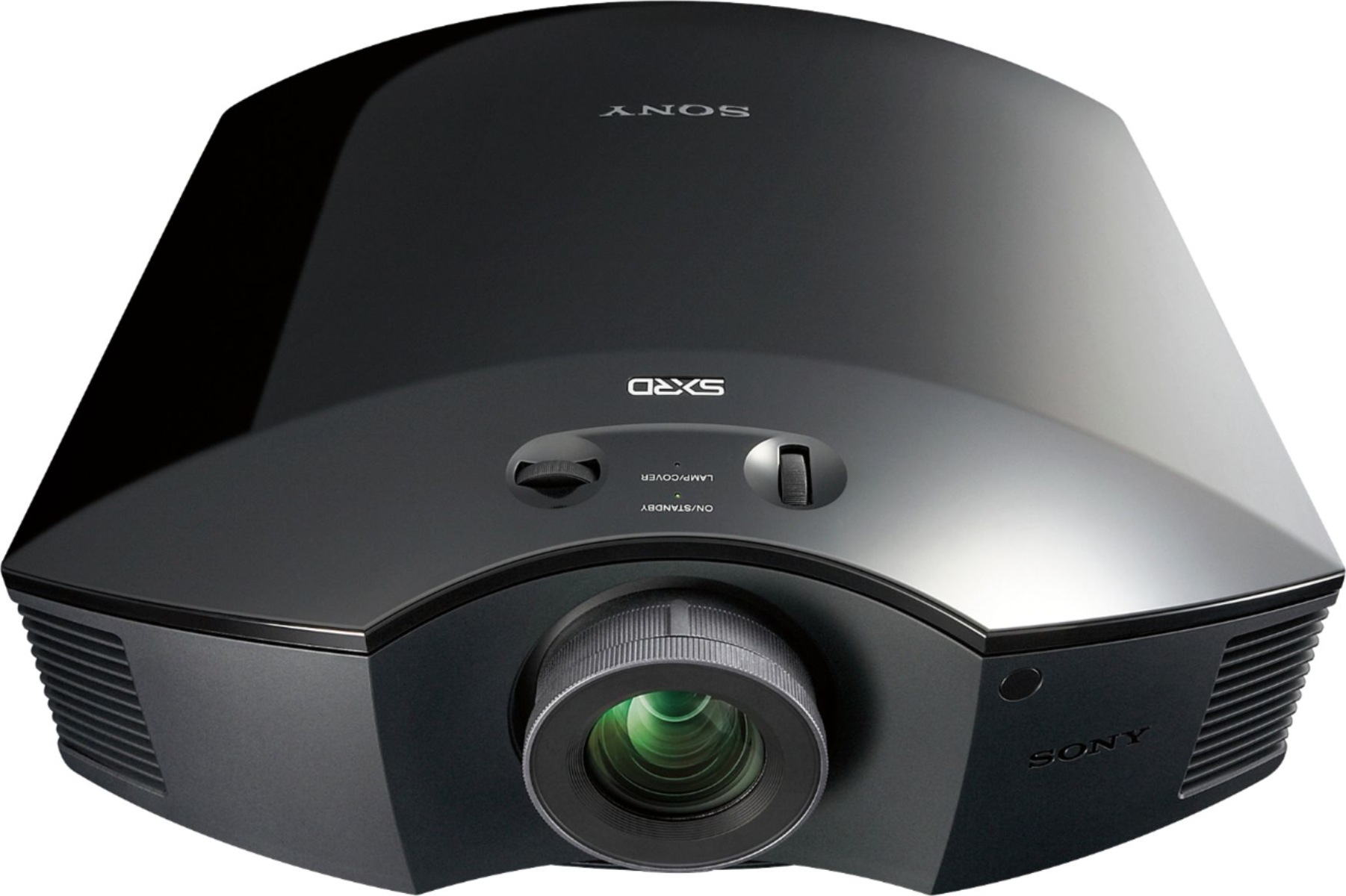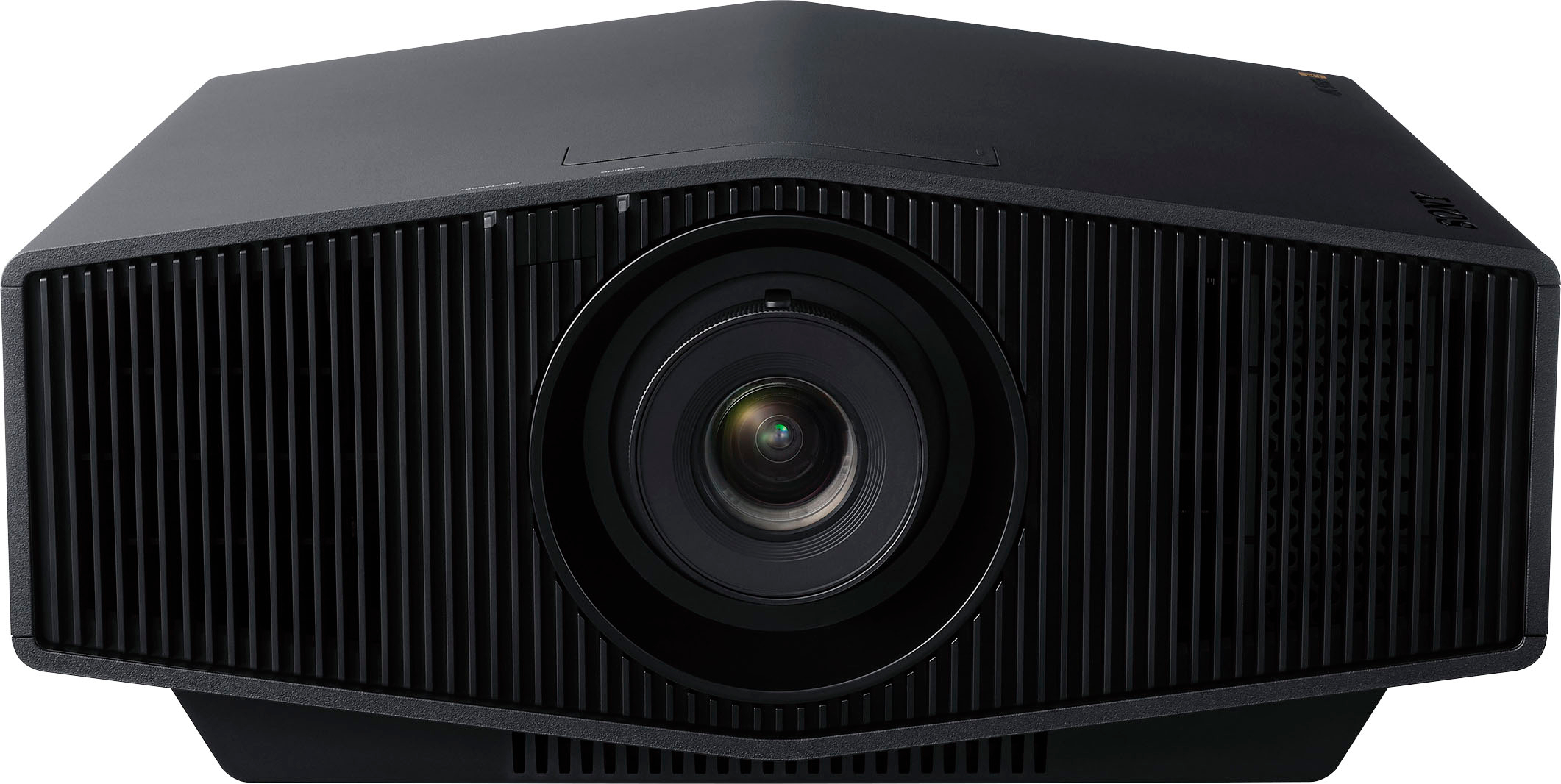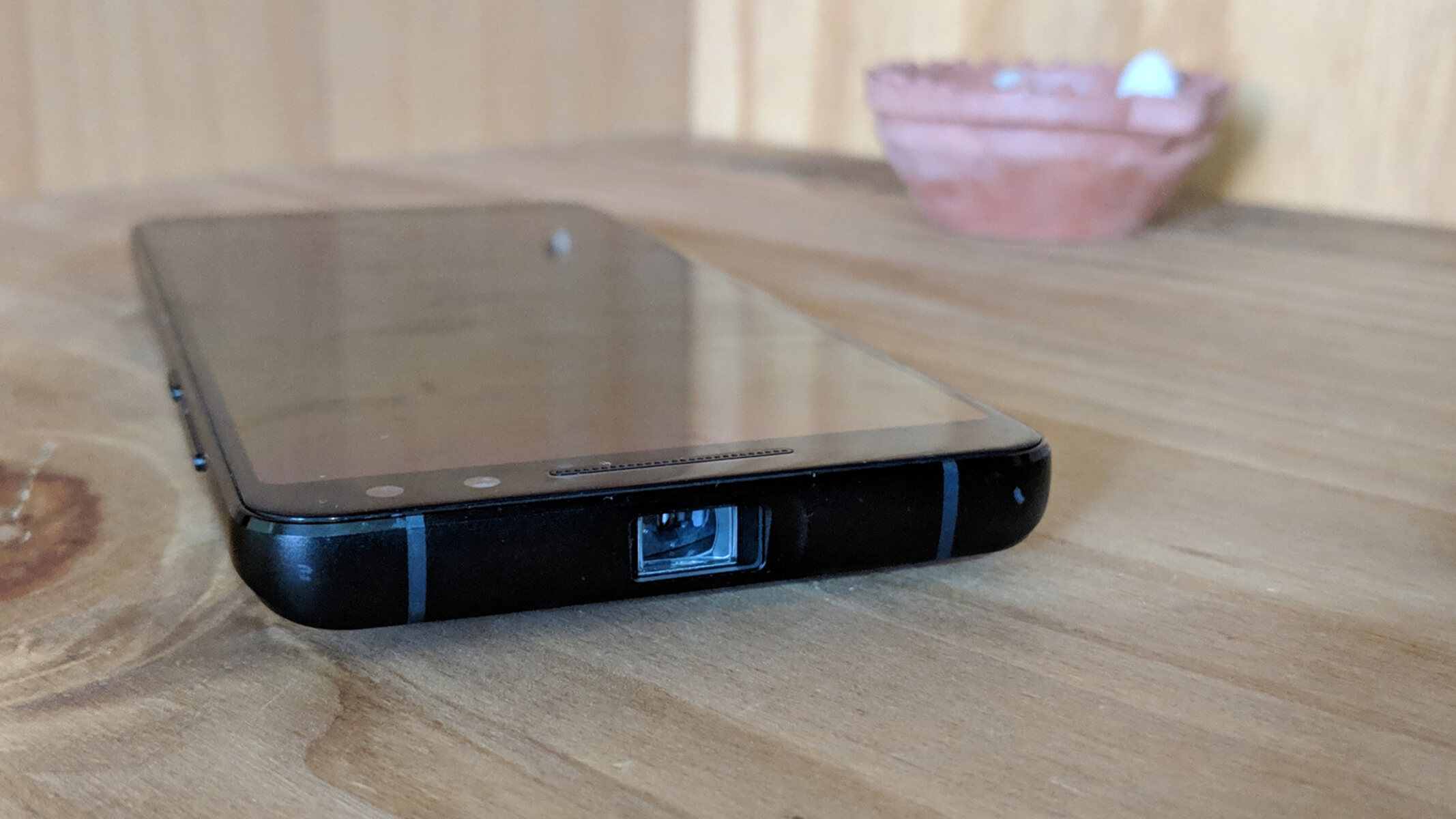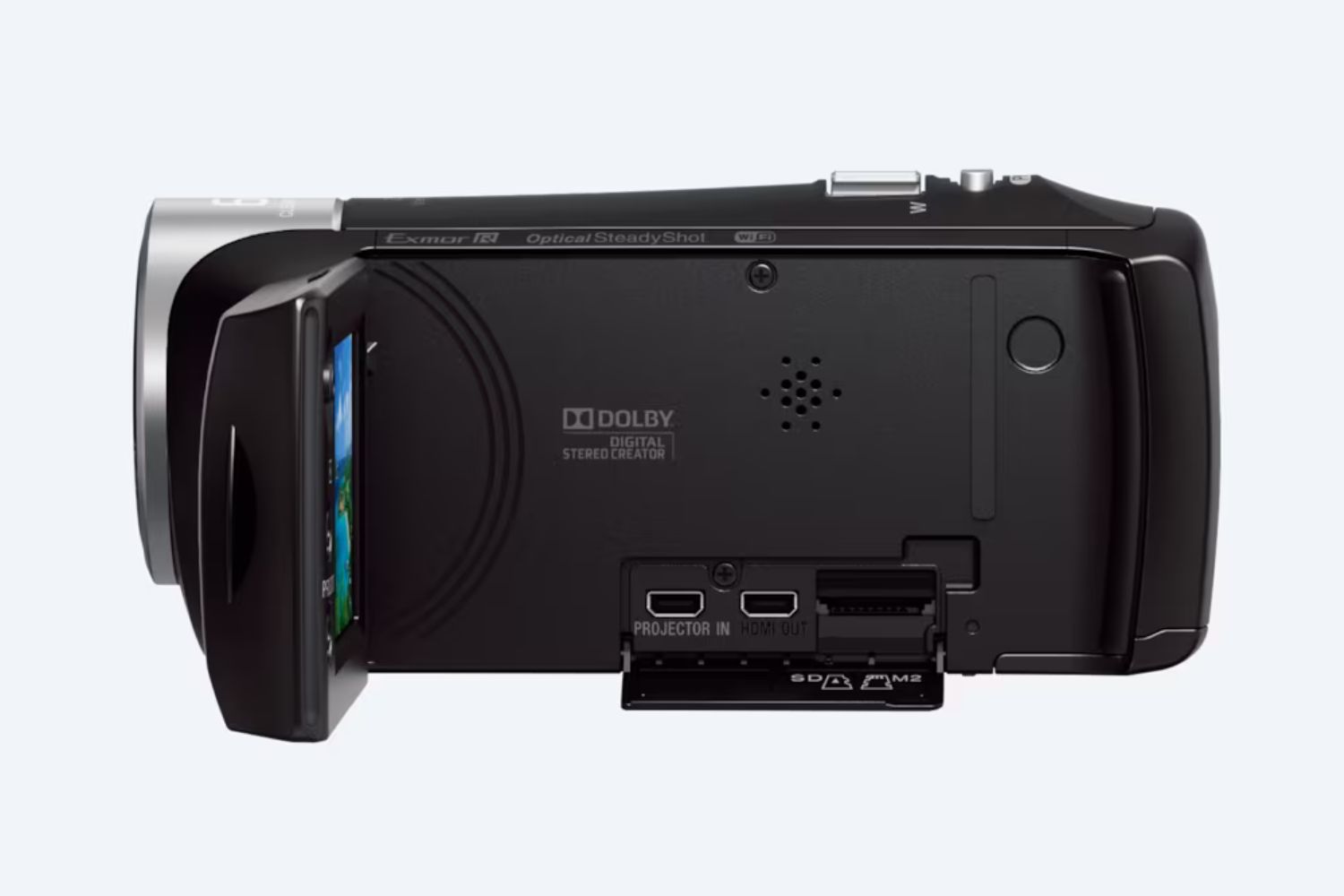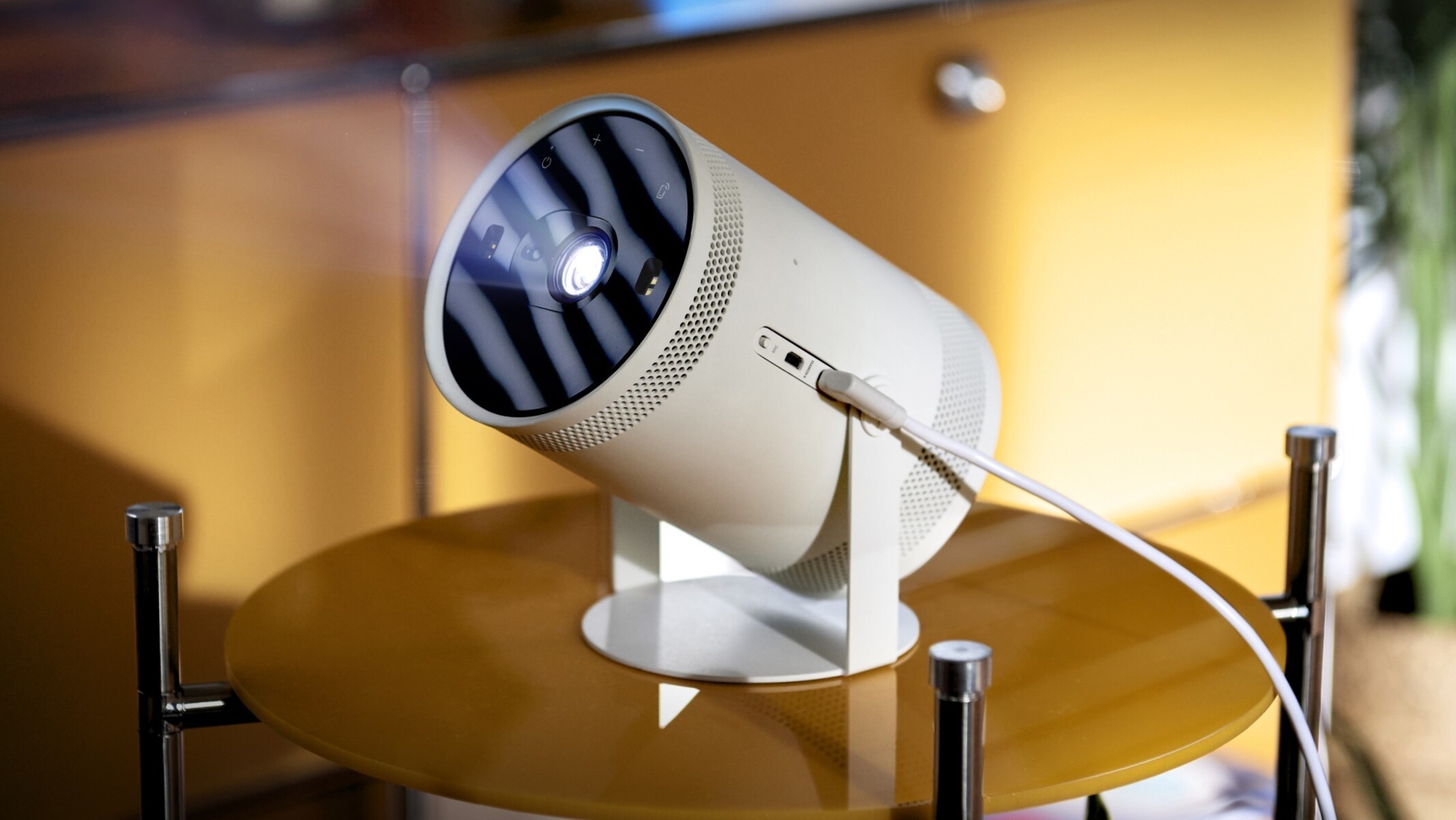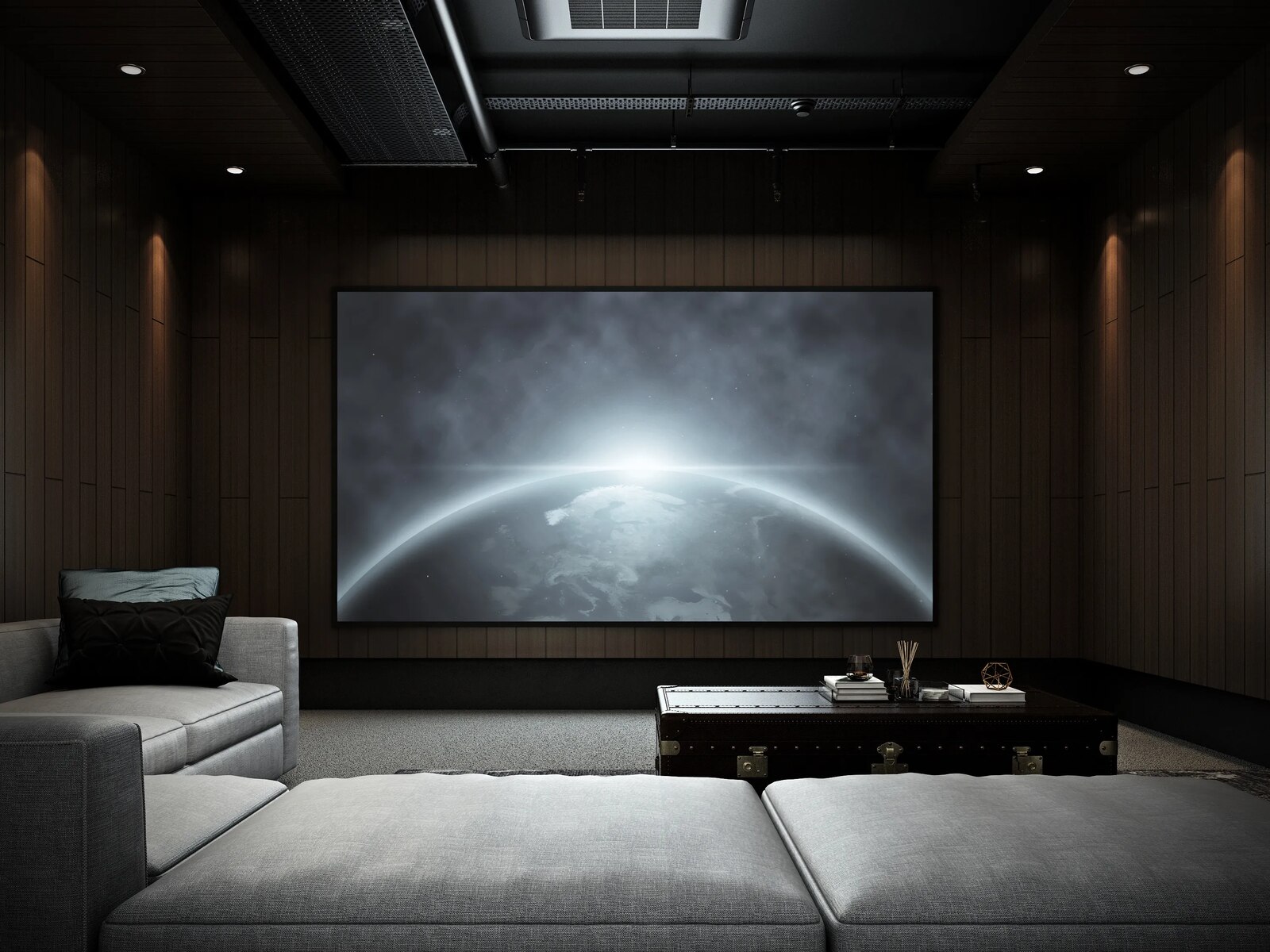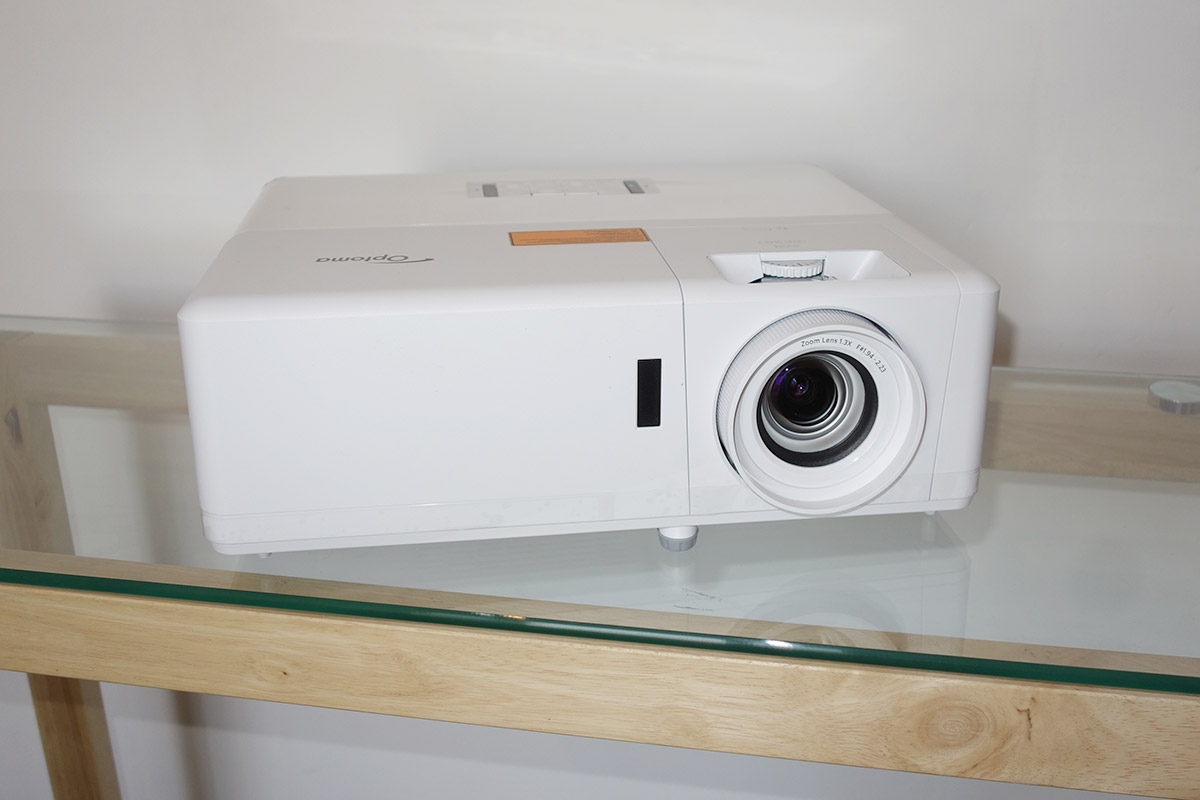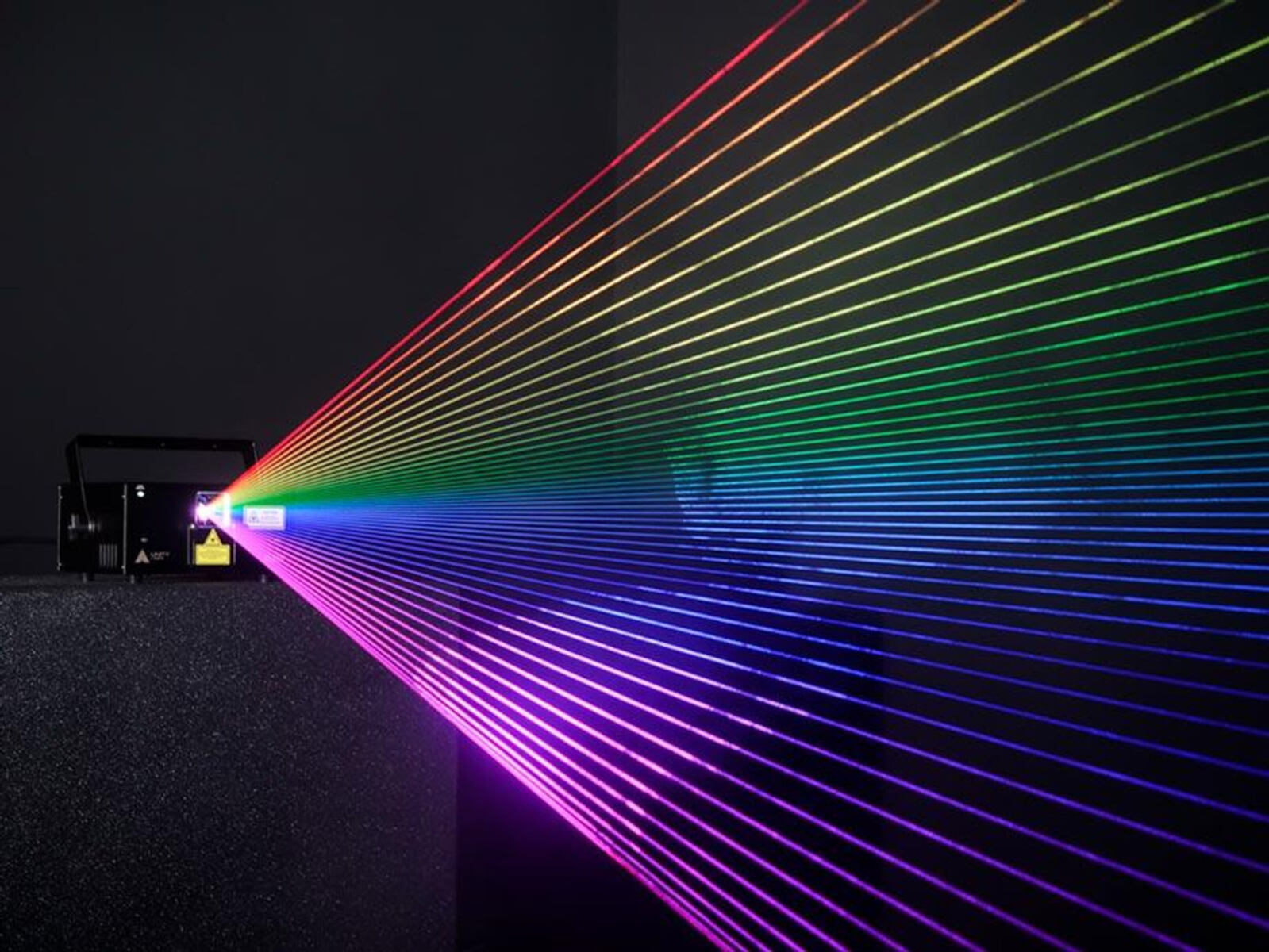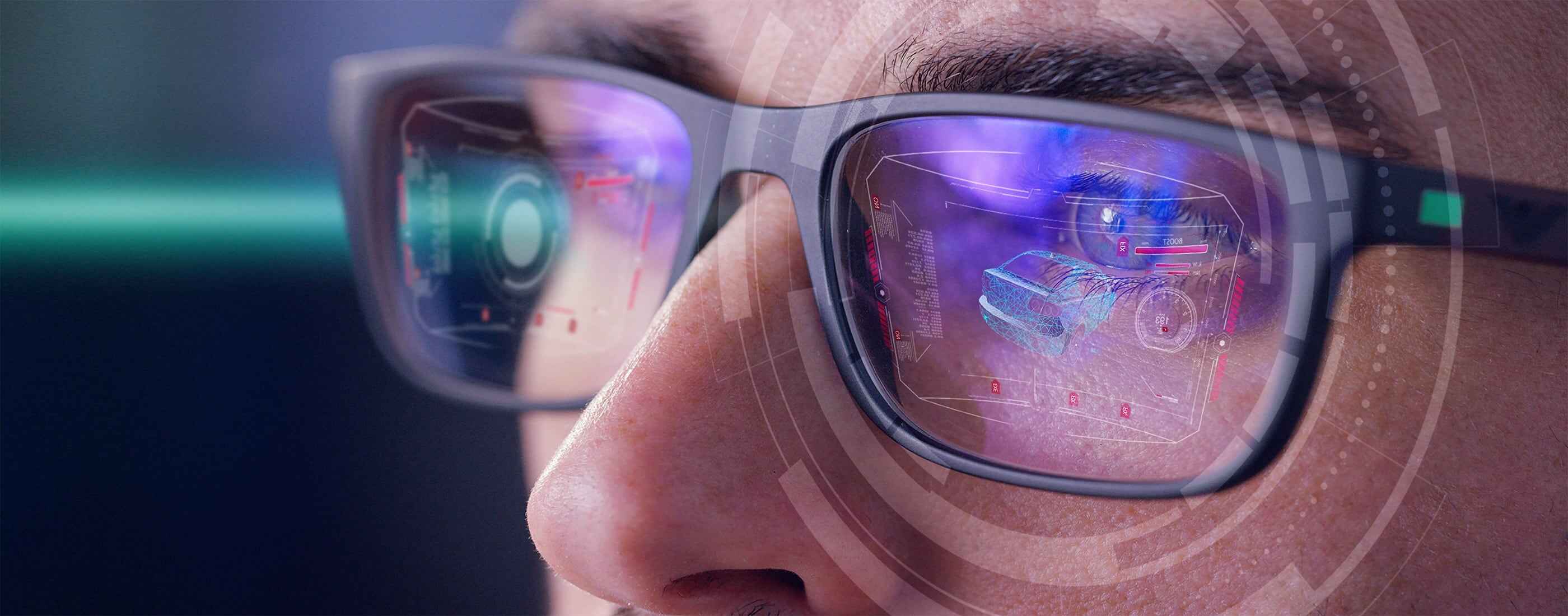Introduction
Welcome to the world of Sony projectors, where stunning visuals come to life. Whether you’re a cinephile looking for an immersive home theater experience, a professional needing a powerful projection solution for presentations, or a gaming enthusiast seeking larger-than-life gameplay, a Sony projector can be the perfect choice.
Sony has established itself as a leading brand in the audiovisual industry, known for its cutting-edge technology, superior image quality, and user-friendly features. In this guide, we will explore how to make the most of your Sony projector and create unforgettable viewing experiences.
With a range of models to choose from, it’s important to find the Sony projector that suits your specific needs. Whether you’re looking for a compact portable projector or a full-fledged installation projector, Sony offers a diverse range of options to cater to various requirements. Consider factors such as brightness, resolution, connectivity options, and throw distance to ensure you choose the right projector for your space.
Once you have selected the ideal Sony projector, it’s time to set it up. The setup process is straightforward, but it’s crucial to follow the manufacturer’s guidelines for optimum performance. This includes finding the right location for the projector, connecting it to your chosen device, adjusting image size and focus, and calibrating picture and sound settings.
In addition to the essential setup steps, Sony projectors come with advanced features that can enhance your viewing experience. These features may include lens shift, keystone correction, 3D projection capabilities, and smart functionalities such as Wi-Fi connectivity and streaming apps. Understanding and utilizing these features can further elevate your projector usage.
Proper maintenance and care are essential to prolong the lifespan of your Sony projector. Regular cleaning, checking for firmware updates, and storing it in a suitable environment are some of the key aspects to consider.
Now, let’s delve into the world of Sony projectors and unlock the extraordinary display potential they offer. With the right knowledge and techniques, you’ll be able to enjoy strikingly vivid visuals, immersive sound, and unparalleled entertainment or presentation experiences.
Choosing the Right Sony Projector
When it comes to choosing the right Sony projector, several factors should be taken into account to ensure that you make an informed decision that aligns with your specific needs and preferences. Here are some key considerations to keep in mind:
- Brightness: The brightness of a projector is measured in lumens. Consider the lighting conditions in your intended viewing area. If you plan to use the projector in a dimly lit room or dedicated home theater, a higher lumen output will provide better image quality. For brighter environments or larger screens, opt for a higher brightness level.
- Resolution: Sony offers a range of resolutions, including HD (1280×720), Full HD (1920×1080), and even 4K (3840×2160) options. Choose a resolution that suits your viewing preferences and content requirements. If you primarily watch high-definition movies or play video games, a projector with higher resolution will deliver greater detail and clarity.
- Connectivity: Consider the devices you’ll be connecting to the projector. Ensure that the Sony projector has the necessary ports and interfaces, such as HDMI, VGA, USB, and audio outputs, to accommodate your devices and allow for seamless connectivity.
- Throw Distance: The throw distance refers to the distance between the projector and the screen or wall on which the image is displayed. Measure the available space in your room and determine the throw distance range that fits your setup. This will help you select a projector with the appropriate throw ratio to achieve the desired image size.
- Features and Technology: Sony projectors offer a variety of advanced features, such as lens shift, keystone correction, 3D capabilities, and smart functionalities. Consider which features are important to you and how they can enhance your viewing experience.
- User Reviews and Expert Recommendations: Read customer reviews and seek expert advice to gain insights into the performance and reliability of different Sony projector models. This will help you make a more informed decision and choose a projector that has received positive feedback from other users.
By carefully considering these factors and conducting thorough research, you can ensure that you select a Sony projector that meets your specific requirements and provides an exceptional viewing experience. Remember to take into account your viewing environment, preferred resolution, connectivity needs, and desired features when making your final choice.
Setting Up the Projector
Setting up your Sony projector correctly is crucial to ensure optimal performance and enjoyment. Follow these steps to set up your Sony projector:
- Choose the Location: Find a suitable location to place your projector. Consider factors such as the viewing angle, distance from the screen or wall, and accessibility to power outlets. Make sure the location provides enough space for proper ventilation.
- Mount or Place the Projector: Depending on the model, you can either mount the projector using a ceiling mount or place it on a stable surface. Follow the manufacturer’s instructions for proper installation to ensure stability and minimize vibration.
- Connect the Power: Plug in the power cord of the projector to a power outlet. Ensure that you use the provided power cord and adapter specifically designed for your projector model.
- Connect the Source Device: Choose the appropriate connection method based on your source device. Connect your device to the projector using an HDMI, VGA, or other compatible cables. Refer to your device and projector manuals for detailed instructions.
- Power On the Projector: Press the power button on the projector or the remote control to turn it on. Wait for the projector to initialize and warm up. This process may take a few seconds or minutes, depending on the model.
- Adjust Image Size and Focus: Use the zoom or focus controls on the projector or the remote control to adjust the image size and focus. Experiment with different settings until you achieve the desired image quality and size on the screen or wall.
- Keystone Correction: If your projector supports keystone correction, use the keystone adjustment feature to correct any distortion caused by the projector’s angle. This will ensure a square and proportionate image.
- Audio Connections: If you want to connect external speakers or audio devices, use the appropriate audio output from the projector to connect to your preferred audio system while referring to the user manual for further instructions.
- Test and Fine-tune: Once you have completed the initial setup steps, test the projector by playing different content and adjusting the settings to your liking. Fine-tune the picture quality, color settings, and audio levels to achieve the best viewing experience.
Following these steps will ensure that your Sony projector is correctly set up and ready for an immersive viewing experience. Take your time to carefully configure the projector settings according to your preferences, and don’t hesitate to refer to the user manual for detailed instructions and troubleshooting tips.
Connecting the Projector to Your Device
To fully unleash the power of your Sony projector, it’s important to establish a seamless connection between the projector and your preferred device. Follow these steps to connect your Sony projector to your device:
- Identify the Output Ports: Take note of the output ports available on your device. Common output ports include HDMI, VGA, and DisplayPort. Ensure that your device has a compatible output port that matches the input ports on your Sony projector.
- Choose the Appropriate Cable: Select the appropriate cable based on the output port of your device and the input ports on the projector. For example, if your device has an HDMI output and the projector has an HDMI input, use an HDMI cable for the connection.
- Connect the Cable: Plug one end of the cable into the output port of your device and the other end into the corresponding input port on the Sony projector. Ensure that the cable is firmly connected to both devices to avoid signal loss.
- Power On the Projector and Device: Turn on both the Sony projector and your device. Make sure that the projector is set to the correct input source (e.g., HDMI) to receive the signal from your device.
- Configure Display Settings: Once the devices are powered on and connected, navigate to the display settings on your device. Select the appropriate display or resolution settings that match your projector’s specifications. This will ensure the optimal display quality on the projector.
- Adjust Audio Settings: If you want to utilize the projector’s built-in speakers or connect external audio devices, adjust the audio settings on your device accordingly. Select the appropriate audio output source to ensure the audio is played through the desired speakers or audio system.
- Test the Connection: Play content on your device to test the connection between the projector and your device. Ensure that both audio and video are being transmitted properly to the projector. Make any necessary adjustments to the settings for the best visual and audio experience.
By following these steps, you can easily connect your Sony projector to your device and enjoy a seamless viewing experience. Keep in mind that some devices may require additional setup steps or specific settings to establish a successful connection. Refer to the user manual for your device and the projector for any device-specific instructions or troubleshooting guidance.
Adjusting the Image Size and Focus
Once your Sony projector is set up and connected to your device, it’s time to fine-tune the image size and focus to achieve the best possible viewing experience. Follow these steps to adjust the image size and focus on your projector:
- Position the Projector: Determine the ideal distance between the projector and the screen or wall. Refer to the projector’s specifications for the recommended throw distance range. Place the projector at the appropriate distance to achieve the desired image size.
- Zoom Control: If your projector offers zoom functionality, adjust the zoom control to increase or decrease the image size on the screen or wall. Use the zoom control feature to fit the projected image within the desired viewing area.
- Focusing the Image: Use the focus adjustment ring or buttons on the projector or remote control to achieve a sharp and clear image. Turn the focus ring until the projected image appears crisp and well-defined.
- Test Projection: Display a test image or content on the screen or wall to assess the image size and clarity. Take note of any distortion, blurriness, or unevenness in the image and make necessary adjustments.
- Keystone Correction: If the projector is not positioned at the perpendicular angle to the screen or wall, it may result in keystone distortion where the image appears trapezoidal. Use the keystone correction feature on the projector to correct this distortion and obtain a squared image.
- Fine-tune Settings: Explore the projector’s settings menu to further enhance the image quality. Adjust brightness, contrast, color temperature, and other image settings to achieve the desired visual experience.
- Make Iterative Adjustments: Review the projected image from different viewing angles and distances. Make iterative adjustments to the image size and focus to optimize the viewing experience for all viewers in the room.
Take your time during this process to ensure that the image size and focus are adjusted to your satisfaction. It may require some trial and error to achieve the perfect display, but with patience and attention to detail, you can enjoy a sharp, clear, and well-focused image on your Sony projector.
Choosing the Ideal Location for the Projector
Choosing the right location for your Sony projector is crucial in order to optimize the viewing experience and ensure that the projected image is clear, bright, and immersive. Consider the following factors when selecting the ideal location for your projector:
- Distance from the Screen or Wall: Determine the distance between the projector and the screen or wall on which the image will be displayed. Refer to the projector’s throw distance specifications to ensure that it can produce the desired image size at your preferred distance.
- Screen or Wall Color and Texture: Pay attention to the color and texture of the screen or wall where the image will be projected. A neutral or light-colored surface will provide better contrast and image brightness. If using a wall, ensure it is smooth and free from imperfections that may affect image quality.
- Avoiding Obstructions: Ensure that there are no obstructions between the projector and the screen or wall. Objects such as furniture, plants, or decorations should be repositioned or removed to avoid blocking the projected image. This will help maintain a clear and unobstructed viewing experience.
- Lighting Conditions: Consider the ambient lighting conditions in the room. For a home theater experience, a dark environment with controlled lighting is recommended. If the room has windows or sources of natural light, consider using curtains or blinds to minimize light intrusion and maximize image quality.
- Ventilation: Ensure that the chosen location provides adequate ventilation for the projector. Projectors generate heat during operation, and proper airflow is essential to prevent overheating. Avoid placing the projector in enclosed spaces or close to heat sources that may compromise its performance.
- Accessibility to Power Outlets: Make sure that the chosen location has easy access to power outlets for connecting the projector and any additional devices. Consider the length of the power cord and any extension cables that may be required to reach the nearest power source.
- Room Acoustics: Take into account the acoustics of the room and the placement of audio equipment. Position the projector in a way that complements the audio setup to enhance the overall viewing and listening experience.
- Consider Future Upgrades: If you plan to upgrade your projector or make changes to the room in the future, choose a location that allows for flexibility. Consider factors such as potential screen size changes or the addition of soundproofing elements as you plan the projector’s placement.
By considering these factors, you can select the ideal location for your Sony projector, ensuring an immersive and enjoyable viewing experience. Take your time in evaluating different options and make adjustments as necessary to create the perfect environment for projection.
Calibrating the Picture and Sound Settings
To truly maximize your viewing and listening experience with your Sony projector, it’s essential to calibrate the picture and sound settings. Fine-tuning these settings will enhance the clarity, color accuracy, and overall immersion of your content. Follow these steps to calibrate the picture and sound settings on your Sony projector:
- Brightness and Contrast: Adjust the brightness and contrast settings to achieve optimal image clarity. Increase the brightness if the image appears too dim and decrease it if the image appears washed out. Balance the contrast to ensure a good range of shades from dark to light.
- Color and Color Temperature: Adjust the color settings to achieve accurate and vibrant color reproduction. Fine-tune the saturation, tint, and color temperature to your liking. Consider using color bars or test patterns for precise calibration.
- Sharpness and Detail Enhancement: Adjust the sharpness settings to enhance the image’s fine details without introducing excessive noise or artifacts. Enable or adjust any detail enhancement features provided by your projector, taking care not to overdo it.
- Aspect Ratio: Set the correct aspect ratio based on the content you are viewing. For most movies and television shows, the standard widescreen ratio of 16:9 is suitable. Adjust the aspect ratio to prevent distortion and ensure that the content is displayed in its original intended format.
- Sound Mode and Equalizer: Explore the sound settings on your Sony projector to optimize the audio experience. Select a sound mode that best suits your preferences, such as Standard, Cinema, Music, or Game. Adjust the equalizer settings to fine-tune the audio frequencies according to your listening preferences.
- Audio Enhancements: Take advantage of any audio enhancements provided by your Sony projector, such as virtual surround sound or dialogue enhancement. Experiment with these settings to create a more immersive and engaging sound experience.
- Audio Output: If you plan to connect external speakers or a sound system to your projector, ensure that the audio output is set to the appropriate source. This will ensure that the audio is routed correctly to your preferred audio device.
- Test and Adjust: Play various content and test the picture and sound settings. Make small adjustments as you see fit based on personal preferences and content type. Consider engaging in calibration tools or hiring a professional calibrator for even more precise adjustments.
By calibrating the picture and sound settings on your Sony projector, you’ll be able to enjoy an optimized viewing and listening experience. Take your time to experiment with the different settings and keep fine-tuning them until you achieve the desired results. Remember that personal preferences may vary, so trust your own judgement and enjoy your customized audiovisual experience.
Utilizing the Projector’s Advanced Features
Sony projectors come equipped with a range of advanced features that can further enhance your viewing experience and make the most out of your investment. Familiarize yourself with these features and discover new possibilities for your projector:
- Lens Shift: If your projector supports lens shift, take advantage of this feature to easily adjust the position of the projected image without physically moving the projector. Lens shift allows for vertical and horizontal adjustments, giving you greater flexibility in projector placement.
- Keystone Correction: Many Sony projectors offer keystone correction capabilities. If the projector is positioned at an angle, keystone correction can digitally adjust the image to correct any trapezoidal distortion and ensure a square and proportionate display.
- 3D Projection: If you enjoy immersive 3D experiences, check if your Sony projector supports 3D projection. Pair it with compatible 3D content and glasses to transform your viewing experience into a lifelike and engaging adventure.
- Smart Functionalities: Some Sony projectors feature built-in Wi-Fi connectivity and streaming apps. Take advantage of these smart functionalities to access online content directly from your projector, such as streaming services, web browsing, or even screen mirroring from compatible devices.
- Picture and Sound Modes: Experiment with different picture and sound modes available on your Sony projector. These modes are designed to optimize the settings for specific content types, such as movies, sports, or gaming, ensuring an immersive and tailored experience for each activity.
- Wireless Connectivity: If your Sony projector supports wireless connectivity, explore this feature to reduce cable clutter and easily connect your devices. Wireless projection allows for seamless screen mirroring and content streaming from compatible devices, providing added convenience and flexibility.
- Remote Control Features: Take full advantage of the remote control that comes with your Sony projector. Familiarize yourself with its functions, including adjusting settings, accessing menu options, and utilizing shortcut buttons. Some remotes even offer voice control or backlighting for ease of use in dark environments.
- Auto Calibration: Certain Sony projectors offer auto calibration features that automatically optimize picture and sound settings based on the environment. Utilize these features for quick and hassle-free calibration, ensuring optimal performance without the need for manual adjustments.
- Multi-Projection: If you require an even larger display, consider using multiple Sony projectors for a seamless and expanded projection surface. Take advantage of multi-projection options to merge the images and create an immersive panoramic experience.
By exploring and utilizing these advanced features, you can unlock the full potential of your Sony projector and enjoy a customized and immersive viewing experience. Refer to the projector’s user manual for specific instructions on how to enable and optimize these features according to your preferences.
Proper Care and Maintenance of the Sony Projector
Taking proper care of your Sony projector is essential to ensure its longevity and optimal performance. By following these maintenance guidelines, you can keep your projector in top shape for years to come:
- Regular Cleaning: Dust and debris can accumulate on the lens and vents, affecting image quality and causing overheating. Clean the lens and vents regularly using a soft cloth or brush specifically designed for electronics. Avoid using abrasive materials or harsh chemicals that can damage the projector’s surfaces.
- Air Filters: Most Sony projectors have removable air filters that prevent dust from entering the internal components. Clean or replace the air filters according to the manufacturer’s instructions to maintain proper airflow and prevent overheating. Regularly check the filters for any clogs or blockages.
- Firmware Updates: Stay updated with the latest firmware releases from Sony. Periodically check for firmware updates for your projector model and follow the provided instructions to ensure that your projector benefits from the latest performance enhancements, bug fixes, and new features.
- Proper Storage: When not in use, store your projector in a clean, dry, and dust-free environment. Use the provided carrying case or a protective cover to shield the projector from physical damage and dust accumulation. Avoid extreme temperatures and humidity that can negatively impact the projector’s components.
- Avoid Power Surges: Use surge protectors to safeguard your projector from power surges and voltage fluctuations. Power surges can cause irreparable damage to the projector’s internal circuitry. Invest in a high-quality surge protector and make sure it is properly grounded.
- Proper Shutdown: Always follow the recommended shutdown procedure for the projector. Allow the projector to cool down before turning it off completely. Abruptly cutting off power can potentially damage the lamp or other internal components.
- Professional Servicing: If you encounter any persistent issues or notice a decline in performance, seek professional servicing. Do not attempt to disassemble or repair the projector yourself, as it may void the warranty or cause further damage.
- Lamp Replacement: The projector’s lamp has a limited lifespan. Keep track of the lamp usage hours and replace it when it reaches the recommended threshold specified in the manual. Follow the lamp replacement instructions carefully to ensure a safe and seamless replacement process.
- User Manual: Familiarize yourself with the user manual provided by Sony. It contains valuable information specific to your projector model, including maintenance tips, troubleshooting guidance, and safety precautions. Refer to the manual whenever needed for reference and guidance.
By following these care and maintenance practices, you can ensure that your Sony projector remains in optimal condition, delivering exceptional performance for years to come. Regular cleaning, proper storage, and staying up to date with firmware updates are key aspects in prolonging the lifespan and maximizing the enjoyment of your projector.
Conclusion
Congratulations! You’ve now learned how to make the most of your Sony projector. By selecting the right projector, setting it up correctly, and utilizing its advanced features, you can create a truly immersive and captivating viewing experience. Adjusting the image size and focus allows you to customize the projection to your preferences, while choosing the ideal location ensures optimal viewing conditions.
Calibrating the picture and sound settings enhances the clarity, color accuracy, and audio quality, while proper care and maintenance of your Sony projector will ensure its longevity and peak performance. It’s important to regularly clean the lens and vents, update the firmware, and store the projector in a suitable environment.
Lastly, make sure to explore the projector’s advanced features to take your viewing experience to the next level. Lens shift, keystone correction, 3D projection, wireless connectivity, and smart functionalities all contribute to a more versatile and enjoyable experience. Taking advantage of these features will allow you to customize your viewing experience according to your preferences and content type.
Remember to refer to the user manual for your specific model for additional guidance and troubleshooting. With the knowledge and techniques you’ve gained, you can now fully unleash the power of your Sony projector and enjoy breathtaking visuals, immersive sound, and unparalleled entertainment or presentation experiences.







